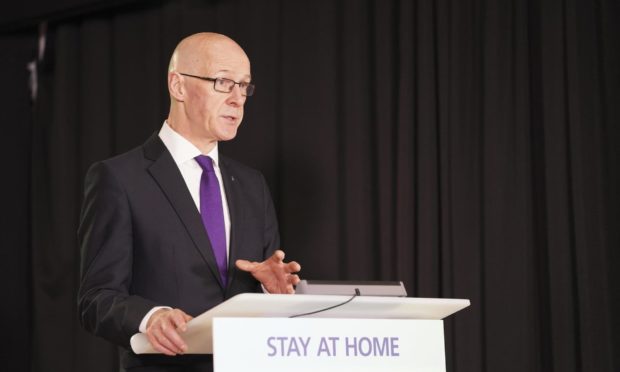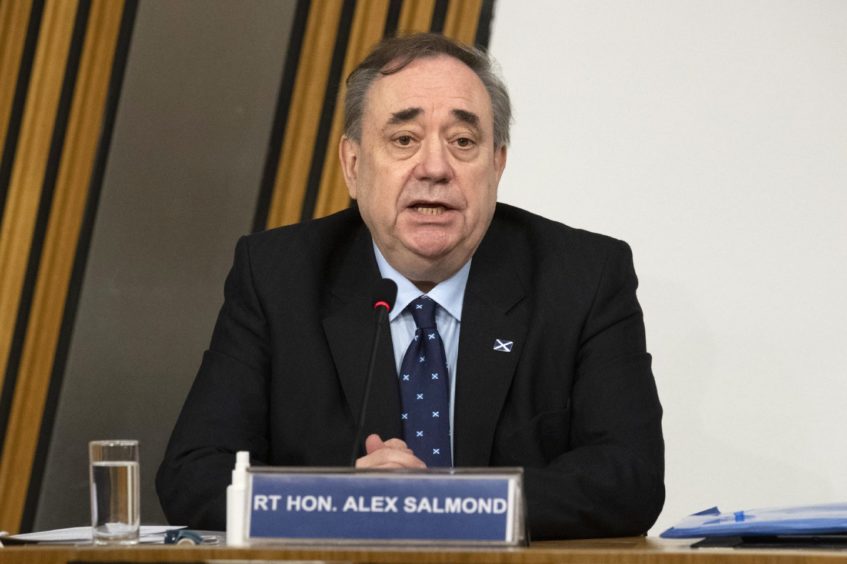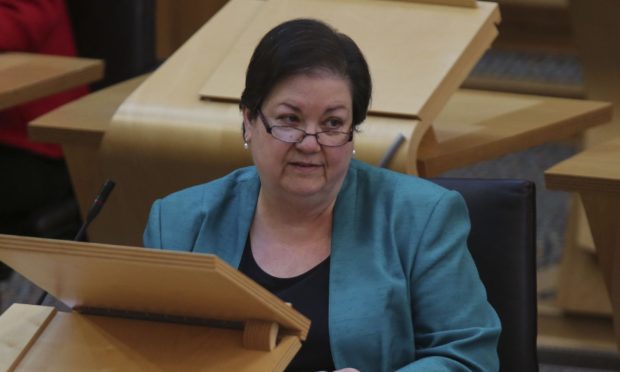John Swinney claims newly published legal evidence has “utterly disproved the conspiracy theory” put forward by Alex Salmond.
The deputy first minister says the legal advice from November 2018 clearly showed the Scottish Government did not delay the concession of a judicial review involving the former first minister or ignore recommendations from its lawyers.
The Scottish Government had resisted the release of the legal advice for months, despite two votes in parliament, citing the importance of confidentiality.
However, Mr Swinney was forced into a U-turn at the start of this week after it became clear that enough MSPs would support a motion of “no confidence” in him if he did not.
In his evidence last week, Mr Salmond suggested the government had ignored its legal advice and pressed on with the civil case amid fears losing it would have “cataclysmic” consequences for its reputation.
‘Unfounded and unfair criticism’
Mr Swinney said the latest evidence, released on Friday, vindicated the government.
“Today the Scottish Government has released further legal advice documents to provide a clear picture of the key legal advice received about the judicial review brought by Alex Salmond,” he said.
“This addresses the unfounded and unfair criticism that the Scottish Government was seeking to suppress information about advice received during November 2018.
“We are publishing two written notes from counsel from early November, after which a process of adjustments to grounds and answers continued during November and into December 2018.
“I am completely clear that these documents, taken in their entirety, utterly disprove the conspiracy theory that the Scottish Government delayed the concession of the judicial review or ignored advice from counsel, or that there was a plot against Mr Salmond.
“These documents demonstrate that the case became unstateable in late December and the Scottish Government conceded quickly afterwards, in early January.”
‘Devastating documents’
Scottish Conservative leader Douglas Ross said: “These are some of the devastating documents that the First Minister hoped would never get out.
“The SNP fought two votes in the Scottish Parliament to shut them down and waited until after Nicola Sturgeon’s evidence session to release it.
“It’s beyond dispute that the government hid evidence from their own lawyers and then “discounted” their advice, as Roddy Dunlop QC put it.
“These new documents show Nicola Sturgeon thought she was a better lawyer than Queen’s Counsel. She was emphatically wrong and it cost taxpayers more than £500,000.”
John Swinney has finally released some more of the Salmond legal advice.
He told us on Tuesday that he had published the "key legal advice" before Nicola Sturgeon’s appearance at committee.
From an initial reading of these documents, clearly he wasn’t telling the truth.
— Douglas Ross MP (@Douglas4Moray) March 5, 2021
‘Failings of the government’
Scottish Labour deputy leader and committee member Jackie Baillie said: “The release of further documents today is welcome but it remains to be seen whether the committee truly now has all of the documents that exist.
“It is extremely disappointing to hear from John Swinney that several key meetings with counsel are apparently without minutes.
“The basic failure to ensure that there is a written record of key meetings speaks volumes about the way in which the Scottish Government approached the whole matter.
“I am sure that counsel will have taken notes and it is open to the Scottish Government as the client to waive confidentiality and provide these to the committee, especially those for the meeting on November 13.
“What the newly released documents confirm is that the Scottish Government refused conceding the judicial review for as long as feasibly possible and that the astonishing failures of the investigation directly led to the women involved being cruelly let down.
“The documents tell of ‘entirely avoidable’ errors and mention that officials and lawyers were put in ‘extremely difficult’ professional positions due to the failings of the government.”


